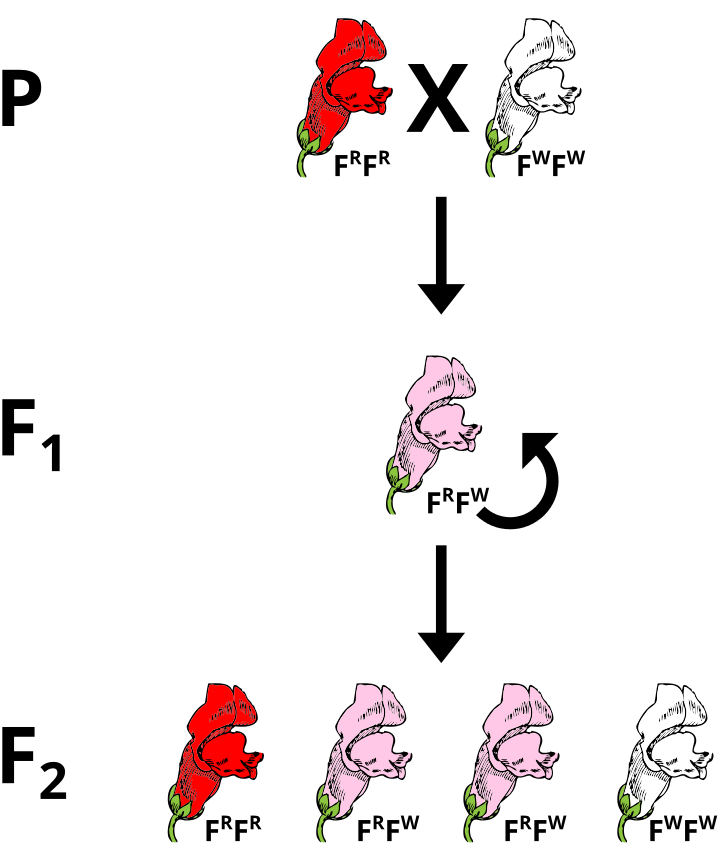Table of Contents
Non-Mendelian Genetics
Many traits do not follow the Mendelian inheritance patterns that we see in the traits of pea plants. However, these more complex patterns of inheritance still adhere to the basic principles of independent assortment and segregation.
Incomplete Dominance
During Mendel’s time, people believed in a concept of blending inheritance whereby offspring demonstrated intermediate phenotypes between those of the parental generation. This was refuted by Mendel’s pea experiments that illustrated a Law of Dominance. Despite this, non-Mendelian inheritance can be observed in sex-linkage and co-dominance where the expected ratios of phenotypes are not observed clearly. Incomplete dominance superficially resembles the idea of blending inheritance, but can still be explained using Mendel’s laws with modification. In this case, alleles do not exert full dominance and the offspring resemble a mixture of the two phenotypes.
The most obvious case of a two allele system that exhibits incomplete dominance is in the snapdragon flower. The alleles that give rise to flower coloration (red or white) both express and the heterozygous genotype yields pink flowers. There are different ways to denote this. In this case, the superscripts of R or W refer to the red or white alleles, respectively. Since no clear dominance is in effect, using a shared letter to denote the common trait with the superscripts (or subscripts) permit for a clearer denotation of the ultimate genotype to phenotype translations.
Codominance
Co-dominance is said to occur when there is an expression of two dominant alleles. The result is that the organism shows both phenotypes at the same time. An example of this is shown below.
In the case of cattle, the allele for red hair and the allele for white hair are codominant. A cow that inherits one of each allele will express both red and white hairs. This color combination is called roan.
Multiple Alleles
Some traits are controlled by more than two alleles. Human blood type is one example. Three alleles exist in the ABO system: A (IA), B (IB), and O (i). The alleles for A and B are codominant. This results in four blood types: A, B, O, and AB.





